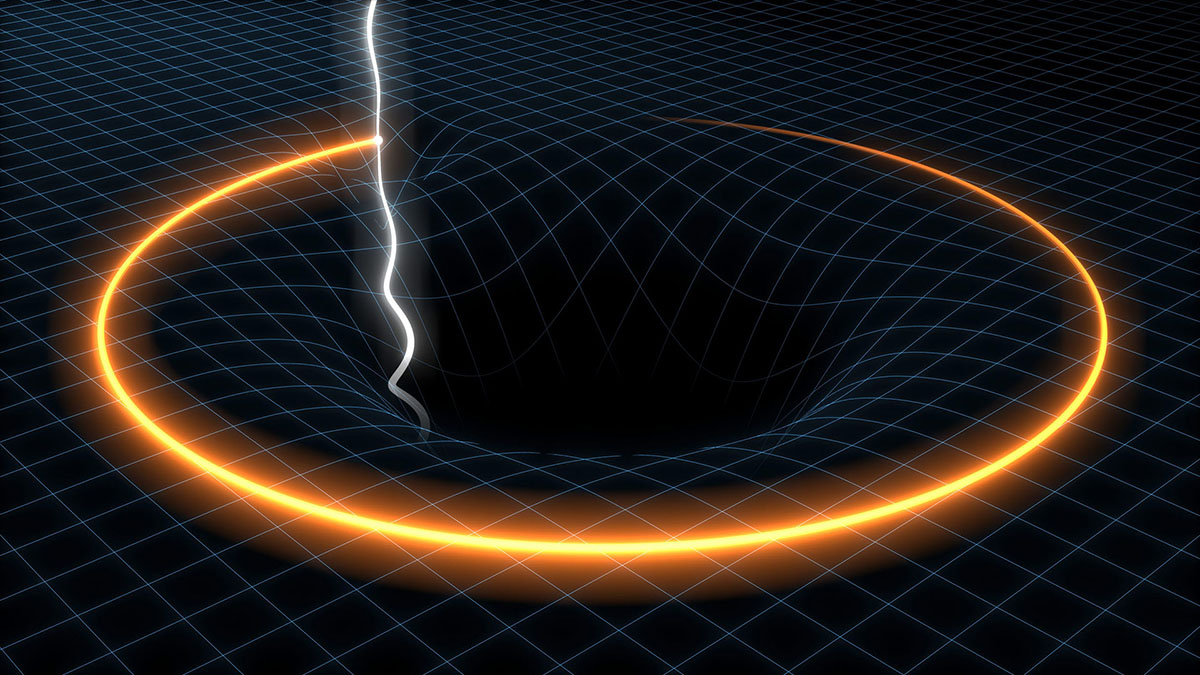a billion solar masses of nothing

Imagine yourself back in science class. No, not in a lecture on advanced physics in college. Think back a little further to your high school teachers explaining to you that black holes were actually just very compressed bits of matter with so much gravitational energy that not even light can escape from them. The part about gravity is right. The part about what a black hole actually is when we look beyond the event horizon is dead wrong. Even though black holes can have the mass well over a billion times that of our sun, they’re actually completely devoid of matter. They’re literally extremely small, insanely massive spheres of raw gravitational energy.
How exactly does that work? Why would nothing have so much heft? Well, let’s think about what happens to a dying star big enough to collapse into a black hole. As it runs out of fuel, the elements in its core get heavier and heavier until it contains almost 1.5 solar masses worth of iron. For the star, creating iron doesn’t give off any net gain in energy so it can no longer keep from collapsing in on itself and a supernova explosion is now imminent. Normally, as the stars outer layers fall back towards its core, they hit an inert mass supported only by the Pauli-exclusion principle which states that no two particles with the same spin and charge can be in the same place at the same exact time. In physics, this is known as degeneracy pressure. The star’s layers will be pushed out and we see’ll a spectacular burst. But the star we have in mind is not normal.
The interesting thing about physics is that with enough energy, any resistance can be overcome, even that of degenerate matter. Our hypothetical star implodes with such ferocity, all matter is ripped apart even at a sub- atomic level. Only the pure gravitational energy of the core is left behind and as excess material is thrown out to create a hypernova blast, the energetic ghost wraps itself in an event horizon and starts feeding on anything caught in its grasp, spewing out a duo of superheated jets during the chaotic process. Inside the black hole is a maelstrom of energy held only by immense gravity. Outside, it has the same gravitational force as the parts of the star that formed it. Its mass is a function of Einstein’s mass-energy equivalence, summed up in what is probably the most famous equation in science.
What exactly goes on inside this hyper-energetic sphere and what bizarre things happen as streams of heat, light, radiation and warped space and time intersect, are still the stuff of rather creative mathematics. But what we do know is enough to leave us scratching our heads and wonder how even the most creative sci-fi novels and movies can’t hold a candle to the kind of stuff we find floating around the universe, and that’s probably the most interesting thing about natural randomness. What we can conceive is limited only by our imaginations, but nature has no such restriction since it doesn’t need to actually conceive anything. Over eons of countless collisions, explosions and collapses, anything can happen and as we can see, it usually does.





